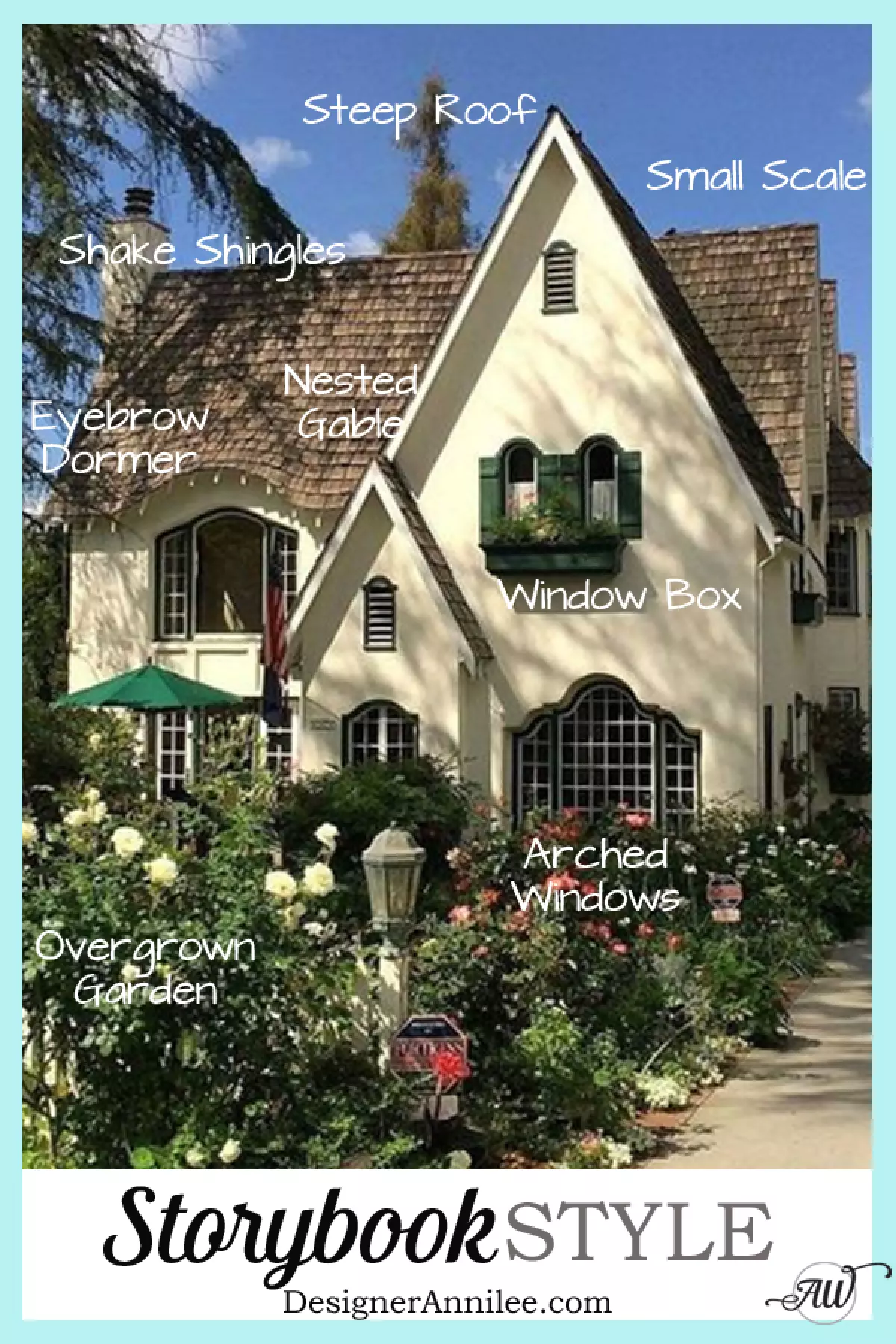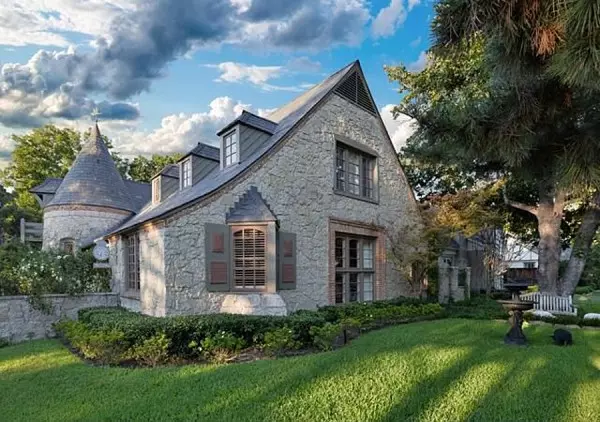Do you ever dream of living in a fairytale cottage or a whimsical castle? If so, you'll fall in love with the Storybook Style homes that captivated America in the 1920s and 30s. Inspired by the charm of rural cottages, medieval buildings, and country estates, these homes mix the quaint, quirky, whimsy, and magic together. Also known as Fairytale or Disneyesque, this eclectic architectural style combines elements from medieval fortifications, French farmhouses, English peasant cottages, and even Middle Eastern temples. Join us as we explore the wonders of Storybook homes and discover everything you need to know about their unique charm.
A Legacy of Enchantment
The Storybook style emerged in the 1920s when soldiers returned from Europe after World War I and the film industry was booming. People became fascinated with charming and exotic architecture, and the Storybook style quickly gained popularity. It originated in Hollywoodland, where skilled set builders used their talents to create whimsical homes for eccentric wealthy clients. Soon, the style spread across California, up to the Pacific Northwest, and eventually throughout the United States.
Storybook style homes share similarities with period revivals but with a twist. They are exaggerated and joyful, not meant to be taken too seriously. The style draws upon a wistfulness for the past and vernacular European styles. Storybook homes incorporate an eclectic variety of architectural elements, a love of fine craftsmanship, and a sense of humor. These houses are typically quaint, a bit smaller, but bursting with personality.
Unveiling the Characteristics of Storybook Style Homes
Let's take a closer look at the defining concepts of Storybook style homes:
Types:
Rural, Vernacular, Castle, Spanish Colonial, English Tudor, French Normandy, German
Materials:
Simple materials such as brick, stone, and stucco are used. These materials are combined in eclectic ways to create unique textures and effects.
Features:
From turrets to pointed, eyebrow, and onion arches, Storybook homes are full of distinctive elements. You might spot dovecotes, climbing ivy, thatched or shake roofs, exposed beams, and overgrown secret gardens.
Walls:
Half-timbering with brick or stucco, stained glass, and textured plaster are common features that bring character to the walls.
Roofs:
Storybook roofs are known for their unique shapes and patterns. Look out for jerkinhead gables, steep pitches, catslides, and swaybacks. Dormers, both functional and purely decorative, add to the charm.
Materials:
Simple materials lovingly detailed, like brick, stone, and stucco, are used. Wrought iron is prized for its irregular hand-worked appearance and is used for grills, railings, strap hinges, and more.
Ceilings:
Vaulted ceilings, exposed beams, corbels, and clerestory windows create an airy and whimsical feeling inside Storybook homes.
Windows & Doors:
Gothic tracery, Dutch doors, casement windows, leaded and stained glass, losenge-shaped muntins, shutters, and window boxes bring enchantment to every corner.
Scale:
Most Storybook homes are relatively small and take inspiration from medieval European homes and traditional English cottages. Larger homes are designed to appear as though built over time or resemble a majestic castle.
Notable Architects:
Harry Oliver, Walter W. Dixon, William R. Yelland and Carr Jones, and Hugh Comstock are some of the architects who have left their mark on the Storybook style.
 Image: Storybook Style House - Your style guide to all things Storybook style homes. Everything you need to know about Fairytale & Storybook architecture, interiors & decor. - DesignerAnnilee.com
Image: Storybook Style House - Your style guide to all things Storybook style homes. Everything you need to know about Fairytale & Storybook architecture, interiors & decor. - DesignerAnnilee.com
Finding Inspiration in the Storybook Style
If you're looking for some enchantment in your life, why not consider a Storybook style home? Picture yourself living in a house nestled among the trees, like a magical part of the forest. The wonky and uneven exposed framing feels old and handmade, adding to the charm. Features like turrets, half-timbering with stucco, leaded glass, and a catslide roof create a truly fairytale ambiance.
 Image: Storybook style homes in Dallas
Image: Storybook style homes in Dallas
Believe it or not, you can even find Storybook style homes right here in Dallas. One such example is a house built by Charles Dilbek in 1934, showcasing the timeless allure of this architectural style.
Styles that Pair Perfectly with Storybook Homes
To complete the storybook look in your home or find styles that harmonize with Storybook architecture, consider Vintage Charm, Cottage Whimsy, Global Eclectic, Curated Boho, French Country, or English Country. These design aesthetics will bring your home to life and transport you to a world of magic and imagination.
Unveiling the History of Storybook Style
The tradition of Storybook style homes dates back to Europe in the 1700s when it was known as the Picturesque Style. It emerged as an emotional and nostalgic reaction to the academic Classical Revival and the industrial age. In France, Marie Antoinette built a mock medieval French Hameau on the grounds of Versailles as an escape from her oppressive court life. Britain saw architects constructing reproduction castles, mock ruins, and thatched medieval-style cottages. Even Windsor Castle, a symbol of British royalty, was redesigned in a "medieval" style in the 1800s.
Germany's most famous "fake castle," Neuschwanstein, built by the king of Bavaria in 1882, later became the inspiration for Disney's Sleeping Beauty's Castle. These architectural wonders, along with the Arts & Crafts Movement in England and the Victorian era in America, set the stage for the Storybook style to flourish.
 Image: Storybook style homes, Neuschwanstein castle in Germany, Disney
Image: Storybook style homes, Neuschwanstein castle in Germany, Disney
In Los Angeles, the rise of the film industry attracted creative minds, and the studios prospered. Inspired by the sets of exotic locations crafted by skilled artisans, architects and home builders infused the flamboyance and creativity into residential architecture. Famous film producer Harry Oliver even built his own Spaneda House in 1921 as his office and dressing room.
By the late 1920s, the Storybook style had spread across the United States. During the Great Depression, people sought solace in the escapist charm of these unique and whimsical homes. The legacy of Storybook style lives on, continuing to bring joy and enchantment to homeowners and admirers alike.

The Storybook style is a magical journey back in time and a celebration of the creativity and imagination that architecture can offer. Whether you're dreaming of a cozy cottage or a grand castle, the charm of Storybook homes will leave you captivated. Embrace the whimsy, and let the magic unfold within the walls of your own fairytale home.

















